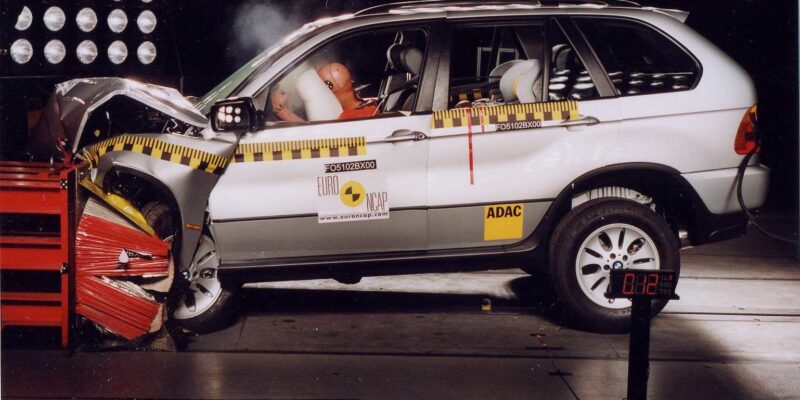Could Female Crash Test Dummies Improve Car Safety?
Several decades ago, car safety could be attributed to seat belt requirements and improved headlight regulations. But now, as driver assist technologies and artificial intelligence are taking over, we still find ourselves conflicted by government crash statistics.
Car fatalities rose by nearly 12% in the first nine months of 2021, which signaled one of the biggest surges since accident reporting began. On top of that, new research shows that belted females in the front seat of a car are 73 percent more likely than belted males to be injured in a crash and 17 percent more likely to die.
These sorrowing statistics beg a greater question: How are new cars safer yet potential for injury, particularly in women, is still prevalent? As seen in recent years, five star safety ratings have become more common across the board. But does that mean these government tests are accurate depictions of real-time accidents?
That’s a question that a number of legislators are now examining, with specific attention to gender-inequality in crash testing data. Keep reading to learn more about the utility of crash test dummies. And find why female crash test dummies are lacking in representation.
What does a crash test dummy do?
Its purpose is rather straightforward: recreate the human experience in a car crash. Over the years, the IIHS and NHTSA have performed millions of test drives using crash test dummies, also officially known as anthropomorphic test devices. These figures are calibrated and scientifically designed to simulate the average proportions and weight of a human being.
Here you can watch them in action at an IIHS facility:

Although they may look simplistic in appearance, these crash test dummies can cost upwards of 1 million dollars to make. It’s a huge investment for government agencies, to say the least. However, it is well worth the life-saving data that these devices intend to provide. Today, both the IIHS and NHTSA use predominantly male crash test dummies to determine vehicle safety. Even though female crash test dummies are available.
Difference between male and female crash test dummies
The male dummy averages a standard height of 5 foot 9 inches. This accounts for the 50 percentile of males in America. In contrast, the female dummy averages 4 foot 11 inches and weighs 108 pounds. As is obvious, this is a fairly inaccurate depiction of the average height and weight of American women these days. Not to mention, the actual female dummy that most facilities use is based mainly off the male body type. Yikes!
It’s safe to say that our most reliable safety rating systems are seemingly failing both automakers and female drivers. Without fair representation in these crash tests, the outcome remains the same. Car safety may be improving in a number of ways, but better injury prevention for all genders is not one of them. The recent crash statistics have shed a greater light on this issue, which has led a number of lobbyists to raise awareness in 2022.
Advocating for female crash test dummies
Though female crash test dummies have been around for awhile (nearly two decades), there’s been more pressure recently put on the Department of Transportation to improve this discrepancy. U.S. Representative Brenda Lawrence (MI) sent a letter to the DOT signed by 60+ other House colleagues to raise awareness on this issue.
We write to call your attention to an often-overlooked inequity in the area of vehicle safety: the gender-based discrepancies in traffic injuries and fatalities that are in part attributable to the absence of female crash test dummies in the current crash test system…
Its representatives, like Lawrence, who are simply advocating for better car safety through better representation. Although dummies are a hefty investment, it’s worth the life-saving data for all genders. In her letter, Lawrence suggests better protection of all drivers is achieved through two avenues:
- Transition to the latest generation of crash test dummy technology for both male and female occupants.
- Require all tests, such as those in the NCAP and FMVSSS, use the most up-to-date male and female crash test dummy technology in driver and passenger seat tests.
Using female crash test dummies that mimic modern body types could play a huge role in reducing the number of lives lost per year. What’s more, automakers rely on these ratings to revise and fine-tune their vehicles for production. How can they improve if representation remains askew?
Final thoughts
The efforts to improve car safety cannot be restricted by gender. Clearly, that’s something we can all urge the Department of Transportation to agree on. But we can also acknowledge that fixing this issue is more complex than creating better female crash test dummies.
Recent findings demonstrate that safety organizations aren’t required to use female crash test dummies at all. And when they do, it’s not an accurate portrayal of the crash. Both the IIHS and NHTSA do no put female dummies in the front seat for frontal crash tests. Plus, the female dummy is more comparable to an 11 or 12 year old child. These realities contribute to the disparity in crash data.
At the end of the day, it comes down to the basics of human biology. Females and males have differing spinal alignments, strength, and natural responses to car accidents. We know female and male bodies are impacted differently in a car accident. So, it goes without saying, why not push the crash test criteria one step further and incorporate female crash test dummies? Why not create better representation within IIHS and NHTSA crash tests?














